Garden Pruning
Tracy DiSabato–Aust (Garden Designer and Author) gives expert video advice on: What is ‘pruning’? | What variables are involved in pruning? | How much pruning does a plant need? and more…
Comments Off on Garden Pruning
Best-selling author – Professional speaker – Horticulturist – Designer – TriathletePosts RSS Comments RSS
Tracy DiSabato–Aust (Garden Designer and Author) gives expert video advice on: What is ‘pruning’? | What variables are involved in pruning? | How much pruning does a plant need? and more…
Comments Off on Garden Pruning
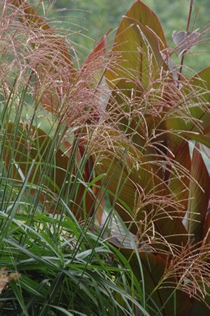 The exciting process of mixing and matching an endless variety of colors can become overwhelming. One way to simplify the design process is to reduce the number of variables. I’ve found that using a limited color palette, even a monochromatic scheme, is an effective and rewarding way to design combinations.
The exciting process of mixing and matching an endless variety of colors can become overwhelming. One way to simplify the design process is to reduce the number of variables. I’ve found that using a limited color palette, even a monochromatic scheme, is an effective and rewarding way to design combinations.
You can read the complete article at this link:
Planting with a Limited Color Palette
(765kb, PDF)
Reprinted with permission from Fine Gardening Magazine.
Comments Off on Planting with a Limited Color Palette
 In a well-designed border, we often notice the beauty of the combinations of plants more than the individual plants themselves. To achieve this sense of interplay, it’s useful to think about visual texture: the patterns created by the lines and forms of combined leaves, branches, and flowers. Instead of using threads or yarns to weave texture, gardeners can stitch together the varied patterns of plants to create living tapestries. This can be accomplished in a number of ways.
In a well-designed border, we often notice the beauty of the combinations of plants more than the individual plants themselves. To achieve this sense of interplay, it’s useful to think about visual texture: the patterns created by the lines and forms of combined leaves, branches, and flowers. Instead of using threads or yarns to weave texture, gardeners can stitch together the varied patterns of plants to create living tapestries. This can be accomplished in a number of ways.
You can read the complete article at this link:
Designing for Visual Texture
(1.45mb, PDF)
Reprinted with permission from Fine Gardening Magazine.
Comments Off on Designing for Visual Texture
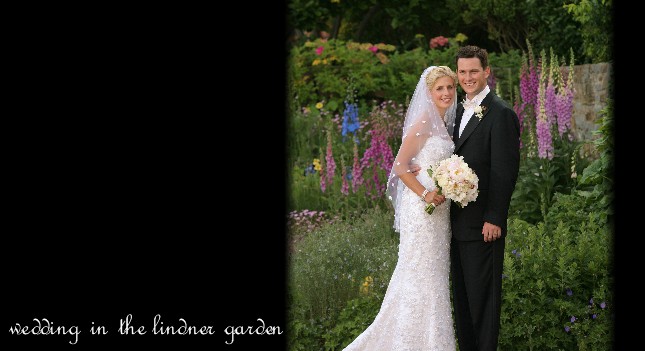
Photo by David A. Ziser (c) 2009
My first impression when I saw the Lindner garden, on my initial consultation, was simply that the garden had no soul. It appeared lifeless, stagnant, and without joy. It was designed in a formal, masculine, style with huge clouds of boxwood weighing down the whole scene and a few token perennials and roses planted haphazardly for what I’m sure was meant to be “seasonal color”. Todd MacFarland the estate manager who had brought me into the project assured me there was interest in a change from this style.
When I later met the vivacious, active, and grounded Martha Lindner, I knew there must have been a “misread” between the current garden style and the client. Here was a woman, full of life, who loved flowers, color, fragrance and had memories and emotional attachments to plants from her childhood and from her children’s childhood. We needed to bring this space to life and more in line with the personality of the woman who owned it.
The goal was to create an, intimate, secluded and elegant garden that would embrace and rejuvenate body, mind, and spirit. The home was built in the 1920’s and the garden was walled. So to create a sense of time and place I felt the style of the garden should be reminiscent of the romantic 1920’s estate walled flower gardens similar to that designed by Ellen Biddle Shipman for the walled garden at Stan Hywet Hall, Akron, Ohio during that time period (see sidebar). I also thought it would be interesting to have this historical connection with another female designer and with another Ohio garden.
The garden was to be used mainly in the mornings for Martha’s prayer time and in the evenings for entertaining. Hot afternoon sun and extreme heat during the mid-day would reduce activity in the space at that time. The garden was to peak in May and June as well as again in September and October. May was most important due to a traditional Mother’s Day dinner Martha hosts annually as well as for her daughters wedding to be held in the garden in late May the year following planting. The clients travel schedule and golfing would reduce the use during the summer months.
PICKING THE COLOR PALETTE AND CHOOSING THE PLANTS
The client’s kitchen looks out into the garden and is designed in a French country style and color theme. Consequently colors for the garden were selected that would coincide with this color palette. A polychromatic scheme (a blend of most colors) was incorporated using predominately cooler yellows, blues, pinks (the client’s favorite color), violets and some creams. Mostly pastels or tints (high values of hues) were selected to be visible in the soft early morning and early evening light when the garden would be most enjoyed by the client. No pure reds or oranges were used but pinks and peaches—tints of red and orange were suitable. Shades of red and red-violet were used in the maroon foliage of smoke bush (Cotinus coggygria ‘Royal Purple’) to add weight and depth to the otherwise light colors and numerous airy fine textures. For good proportion 2/3rd tints to 1/3 shades were utilized. Color is used in blocks and a mosaic, impressionistic approach, is accomplished through interplanting similar to Biddle Shipman’s style but not quiet as mixed—to keep maintenance within reason.
The textures in the garden are mostly fine and light and the forms are predominantly rounded, creating a soft feminine mood which the client preferred to bolder textures and forms. The fine textures are particularly visible in the soft morning and evening light when the garden is used. Bold textures and vertical forms are used as focal points.
Classic plants such as foxgloves (Digitalis), candytuft (Iberis), lily- of –the-valley (Convallaria), pinks (Dianthus), lavender (Lavandula), poppies (Papaver), red buds (Cercis), columbine (Aquilegia) and sweet peas (Lathyrus) were top on the clients list of desirable species. These plants fit perfectly into style and theme for the garden and many would also provide a musky fragrance. To create a garden that was practical to maintain, without the usual large gardening staff present on the estates of the past, newer disease and insect resistant cultivars of heirloom plants were often utilized along with outstanding heirlooms. Sometimes new cultivars were used for a desirable color and in limited cases non-heirlooms were incorporated if fitting. (see plant list) Dr. Denise Adam’s book Restoring American Gardens (Timber Press) was referenced to help determine plant selection for the period and for Ohio. Heirloom annuals are custom grown from seed every season by Baker’s Acres Greenhouse especially for the garden.
Every garden has it’s “issues” and unfortunately this garden is no exception. The high heat that builds up in the garden can be a problem for some of the cool season old-fashioned annuals. There was also a drainage problem along one wall which needed corrected. It can be hard to moderate moisture with such a diverse cross section of planting and invariably some areas are too dry while others are too wet. But by far the biggest obstacles we deal with are deer. They have become immune to the repellent that we had been using and we are experimenting now with others.
PUTTING IT ALL TOGETHER
When designing to pull everything together, from color to texture to form one must consider the principles of design such as Order, Unity and Rhythm. We can achieve
Order through balance and mass collection—Symmetrical balance is accomplished through the pairing of Weeping Red Buds (Cercis canadensis ‘Covey’) at two main entrances into the garden. Hydrangea macrophylla’Endless Summer’ are also paired on either side of all the entrances. The two long borders mirror one another with smokebush, nearly wild roses, and peonies repeating through the center which also creates balance. Mass collection is accomplished through the drift of plants and particularly the mass of Rozanne geranium which creates a low edging around all the beds and spill onto the walks.
Unity is accomplished through dominance, repetition and interconnection. Dominance of vertical form, and bold texture with hollyhocks, foxglove, and delphinium punctuate the otherwise rounded forms and fine airy texture of the majority of other plants. The smokebush also are dominant due to their color which punctuates the borders. All species are repeated in a regular fashion around the garden. Interplanting and a plant intensive design creates beautiful natural interconnection of the plants including melding of nasturtiums, sweet peas and flax.
Rhythm can be set through repetition, alternation and gradation. This is accomplished through the steady repeating of all the species at regular intervals including Rozanne geranium, snow fountain cherries on the walls and numerous poppies—both annual and perennial. Undulation is accomplished with the diverse cross section through the design and low plants moving into tall plants and then back down to low plants. Gradation is noticeable as the plants build from the front to the back of the border and the colors gradually get slightly warmer as we move from season to season creating a rhythmic gradation.
Individual combinations are also designed with consideration to a balance of form, texture and color as well as season of interest for both flowers and foliage. I’m always considering the Golden Mean and 1/3 to 2/3rd rule with color, texture and form. For example 1/3 saturated colors to 2/3 unsaturated or grayed color, 1/3 fine texture to 2/3 bold texture.
Even though there were many design principles followed and there was a keen approach to color, texture, form and plant selection the most important thing is that the garden now reflects who the client is and it is in line with the sense of the place. And happily it now has a soul.
SIDEBAR: PLANT LIST OF NEW CULTIVARS OF (AND??) OLD FAVORITES
Trees & Shrubs
Hydrangea ‘Endless Summer’ (flowers on old and new wood)
Prunus x ‘Hally Jolivette’ espalier (introduced 1940)
Cotinus ‘Royal Purple’ (purple-red leaves)
Philadelphus lewisii ‘Snow Velvet’
Rosa rugosa ‘Hansa’
Wisteria frutescens ‘Amethyst Falls’
Lonicera ‘Graham Thomas’
Clematis Montana var. rubens
Cercis canadensis ‘Covey’
Symphoricarpos ‘Amethyst’
Rosa ‘Nearly Wild’
HERBACEOUS PERENNIALS
Geranium Rozanne
Iris ‘Perfume Counter’
Paeonia ‘Extra Sweet Pink’
Digitalis ambigua
Digitalis purpurea ‘Excelsior Hybrids’
Anemone ‘September Charm’ , ‘Honorine Jobert’
Aquilegia alpine
Papaver ‘Princess Victoria Louise’ , ‘Patty’s Plum’, ‘Lighthouse’, ‘Royal Wedding’, ‘Helen Elizabeth’, ‘Pink Ruffles’
Phlox ‘Tracy’s Treasure’
Delphinium belladonna ‘Bellamosum’
Lilium ‘Casa Blanca’, ‘Stargazer’
Lilium formosana
Leucanthemum ‘Becky’
Miscanthus ‘Cosmopolitan’
Aster ‘Raydon’s Favorite’
Aster ‘Purple Dome’
Iris ‘Caesar’s Brother’
Valeriana officianlis
Chrysanthemum ‘Cambodian Queen’
Delphinium ‘Summer Blues’
Platycodon ‘Komachi’
Coreopsis ‘Crème Brulee’
Phlox paniculata ‘Fesselballon’ ‘Blue Paradise’, ‘David’
Centrantus ruber
Lavandula ‘Provence’
Baptisia australis
Convallaria albostricta
Dianthus ‘Bath’s Pink’
Dianthus barbatus ‘Nigricans’
Thymus ‘Pink Chintz’
Dicentra ‘Gold Heart’
Linum perenne ‘Saphire’
Echinacea purpurea ‘Sunrise’
Hibiscus ‘Plum Crazy’
Alcea rugosa
Alcea ‘Watchman’
Leucanthemum ‘Sunshine’
Iberis ‘Autumn Snow’
Delphinium ‘Royal Aspirations’
Campanula rotundifolia ‘Olympica’
ANNUALS
Lathyrus ‘Matucana’, ‘Painted Lady’, ‘Chatsworth’, Fragrant Ripples’
Tropaeolum ‘Moonlight’
Verbena bonariensis
Verbena ‘Imagination’
Consolida ‘Blue Cloud’
Dahlia ‘Bonne Esperance’, ‘Thomas Edison’, ‘Jersey Beauty’
Antirrhinum ‘Royal Bride’, ‘Black Prince’
Centaurea cyanus ‘Black Bell’, mauve
Gomphrena –pink, purple, mauve
Mirabilis ‘Custard and Cream’
Scabiosa ‘Summer Sundae’
Dianthus ‘Grenadin Yellow’, ‘Elegance Pink’
Salvia ‘Evolution’
Papaver ‘Angel’s Choir’
Papaver somniferum ‘Lauren’s Grape’, ‘Heirloom’, ‘Pink Peony’,
Mathiola incana ‘Lucinda Dark Rose’, ‘Tudor Tapestry’
Heliotrope ‘Fragrant Delight’
Godetia ‘Fruit Punch’
Phlox drumondii ‘Phlox of Sheep’
SPRING BULBS (numerous species and cultivars of below)
Allium
Anemone
Camassia
Fritillaria
Dutch Iris
SIDEBAR: ELLEN BIDDLE SHIPMAN
Years ago while lecturing at Stan Hywet in Akron Ohio my mother and I walked the grounds and “stumbled” upon the partially sunken walled English Garden. We fell in love with the space and learned it had been designed by Ellen Biddle Shipman. I acquired the plans for the garden not knowing that numerous years later I would come back to them and the important woman who created them.
Once I saw the Lindner garden I thought the similarity between it and Ellen Biddle Shipman’s work at Stan Hywet was uncanny. I started reading the excellent book, The Gardens of Ellen Biddle Shipman by Judith B. Tankard (Sagapress) and it confirmed this connection. According to Tankard, Shipman was known as the “dean of American women landscape architects”. She designed over 650 gardens nationally between 1914 and 1946. And more important to me (a female garden designer known for creating colorful gardens with predominately perennials and annuals) she was not only and advocate for women in the profession, but was also considered “one of the best if not the very best, flower garden maker in America”.
This title was bestowed on her by Warren Manning when he suggested to his client Mrs. Seiberling, in 1928, who was a painter and the owner of Stan Hywet, that she use Ellen Shipman, to create perhaps a new plan for the English Garden using a lighter palette of color and greater variety of flowering plants perhaps more in tune with Mrs. Seiberling’s desires. Mrs. Seiberling used the English garden as a place for refuge, reflection and inspiration.
There were so many interesting parallels between the Lindner garden and Shipman’s design for Stan Hywet for Mrs. Seiberling (and dare I say between myself and Shipman) that it would be the main inspiration for my design work for Mrs. Lindner.
Comments Off on New plants, old style, timeless design
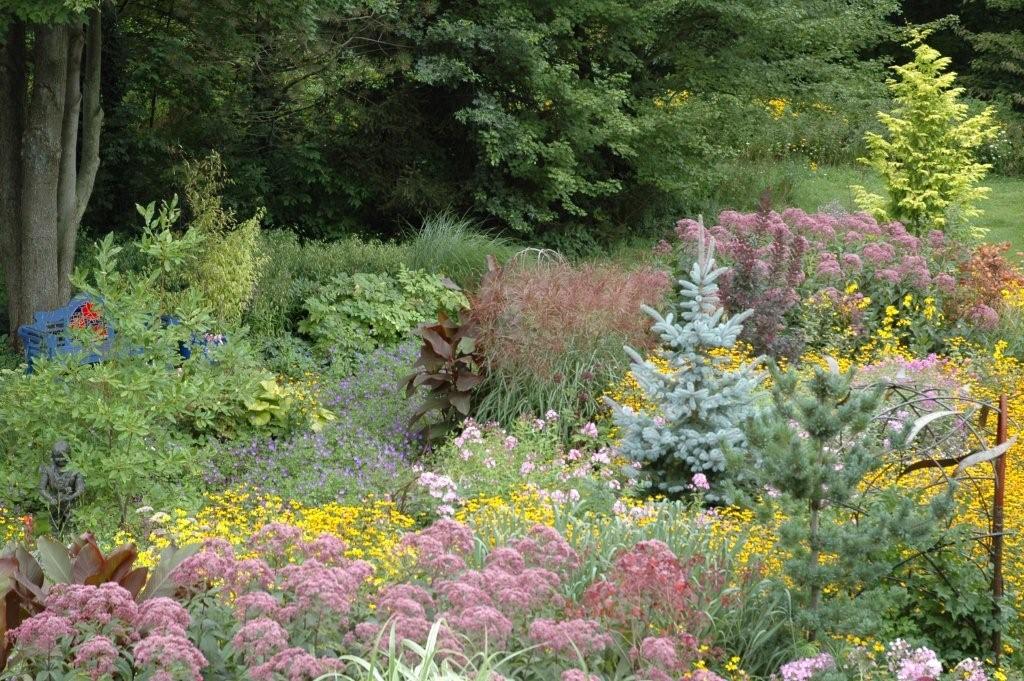
Photo by Tracy DiSabato-Aust (c) 2009
Many people who visit this website do so because of my books and lectures. This website has been a great way to stay in touch with the many wonderful friends I have made through those projects. I greatly appreciate you reading this site.
One of my real joys is doing garden design work. If you’d like to learn more about my activities in that area, click on the word DESIGN in the menu at the top of this page. I’d love to design a garden for you!
Let’s talk about “habitat gardens”. There are so many outstanding plants that are not only beautiful and low care but they also attract songbirds, hummingbirds, butterflies, and perhaps even beneficial insects. These are wonderful additions to our backyard habitat gardens. Here are just a few of the ones I’ll talk about with Lisa Smith and Nancy Reid on Garden Gossip, Blend Radio, March 3, 2009 online at www.bigblendmagazine.com . Join us for this fun and informative program.

Photos by Tracy DiSabato-Aust (c) 2009

Giant Coneflower (Rudbeckia maxima) yellow flowers on 6’ stems followed by seedheads that are great for attracting various insects and Golden Finch (photo) ‘Blue Fortune’ anise hyssop (Agastache ‘Blue Fortune’) long lasting blue flowers on this “Trophy” plant act as a butterfly and bee haven!! ‘Gateway’ Joe Pye Weed (Eupatorium maculatum ‘Gateway’) towering clouds of rose-colored flowers attract butterflies in the summer and then are great food/cover for the Juncos and Tufted Titmouse in winter. (photo) ‘Graham Thomas’ woodbine honeysuckle (Lonicera periclymenum ‘Graham Thomas’) lovely fragrant pure yellow flowers on this vining plant are hummingbird magnets!! Crocosmia (Crocosmia ‘Lucifer’) gorgeous bright red tubular flowers have hummingbirds and gardeners loving it!! And here is just one more… Korean Angelica (Angelica gigas) this is a great habitat garden plant because it attracts beneficial parasitic wasps that feed on soft bodied “bad” insects like spider mites & aphids. It also attracts bees.

Last week I had the pleasure of speaking with Dean Fosdick, who writes for the Associated Press, about ways to save time and money in the garden. I hope to share his article with you sometime in March. In an earlier posting on this site (Feeling The Recession…)we looked at growing ornamental vegetables as a beautiful and thrifty gardening approach. Judy Lowe referenced it along with some other excellent budget-minded tips in her Christian Science Monitor article Money-saving gardening ideas //features.csmonitor.com/gardening/2009/02/16/money-saving-gardening-ideas/ I have postings on ornamental herbs and edible flowers that will arrive soon due to such high interest. But for now I wanted to share with you some of the things Dean and I discussed.
*Select high- impact, low-care plants (This is one of the main reasons I wrote my new book!!) Select plants that are long lived, cold, heat and humidity tolerant so we are not going to the great expense of replacing them. Gardeners waste tons of money and time by killing plants that are either not long lived or not the right choice for their site. Know your site—hardiness zone, soil etc (as I discussed in my earlier design blog and follow those design steps for success). I was thrilled to see Anne Raver’s article in The New York Times, “New This Year: The Tried and True” where the same theme rings out!!
//www.nytimes.com/2009/02/05/garden/05garden.html?_r=1&scp=7&sq=Dan%20Hinkley&st=cse
*Choose Resistant Plants: We save money, time, and invest in our environment by not having to use fertilizers, pesticides, fungicides, deer repellents or excess water by growing tough, resistant plants. (watch for upcoming blog)
*Prepare the soil with nutrient providing organic matter—Plants double or triple in size the first season (so smaller sizes of plants can be purchased) if the soil is prepared properly—create a living soil—so plants are less stressed, less prone to disease and insects—no band aid later with synthetic fertilizers or worse yet Death! (see: Well-Tended Perennial Garden for soil info) Compost yourself to save money but don’t skimp on this step as it will ensure success for countless years.
*Select plants that reseed (Assertively)— Plants that reseed “happily” not invasively (there is a huge difference) fill in space in the garden and thus fewer plants are required. Consider the free-seeding natives Wild-Oat (Chasmanthium latifolium) (photo) , or Bottlebrush Grass (Elymus hystrix) which are happy in wet or dry shade and finally fill in those spaces where you’ve killed numerous other species!!
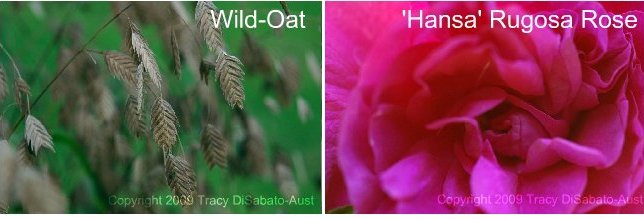
*Select plants that grow wide— “Big Bertha” plants should be “in”—“voluptuous is back?”—good news for Jessica Simpson, Heidi Klum (can you believe they have been called “heavy”?) and these large plants…wide growing plants fill in space and again you will need fewer plants in the garden. Think about the gorgeous ‘Gateway’ Joe Pye Weed (Eupatorium maculatum ‘Gateway’), and the fragrant ‘Hansa’ Rugosa Rose (Rosa rugosa ‘Hansa’) (photo) who can eventually spread to 4’or even 6’.
*Plant sharing— Be generous this year and share your plants with friends and family who may not be able to afford to buy their own. And don’t be afraid to ask for plants from friends if you see they have a large grouping of them. This works great with the above “assertive seeders”. I’ve given away countless Purple Coneflower (Echinacea purpurea) and Heliopsis (Heliopsis helianthoides) which also seed assertively. Hosta and daylilies divide easily with double-fork method (see video section) so make for easy sharing.
*Practice sound Horticulture:Learn Proper Pruning and Maintenance Techniques-Time is money—be fast and efficient in how you maintain your garden by using proper technique, tools etc. (See Well-Tended Perennial Garden for “cutting-edge” pruning tips)
I’m looking forward to your comments on some of your money saving gardening ideas!!
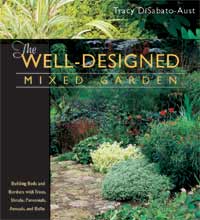 One of the most frequently asked questions I hear about garden design is “
One of the most frequently asked questions I hear about garden design is “ Where do I start?”. Any new venture… be it a new exercise program, a new writing project (blog?), or a new garden can cause us to freeze in our tracks. And revamping a pitiful existing garden can be even more overwhelming. So how can we get beyond the fear (Garden Design You are Not The Boss of Me!!) and enjoy this rewarding highly creative, artistic adventure? Any time we have a mapped out plan we seem to be able to “take on” whatever life throws us. Follow the steps below for success with your new or existing garden design. I go into great detail on this in Chapter 2 of The Well-Designed Mixed Garden .
Where do I start?”. Any new venture… be it a new exercise program, a new writing project (blog?), or a new garden can cause us to freeze in our tracks. And revamping a pitiful existing garden can be even more overwhelming. So how can we get beyond the fear (Garden Design You are Not The Boss of Me!!) and enjoy this rewarding highly creative, artistic adventure? Any time we have a mapped out plan we seem to be able to “take on” whatever life throws us. Follow the steps below for success with your new or existing garden design. I go into great detail on this in Chapter 2 of The Well-Designed Mixed Garden .
Evaluate your Site: Light? – What are the light conditions, sun/shade/part shade. Soil?-The “root” of the issue, 80% of all plant problems relate to poor soil. Test the soil for texture, nutrients as well as organic matter content. Moisture-Wet,Dry? Now what hardiness zone you are gardening in? Winds? Contour of Land? Microclimates? Existing vegetation?
Consider your Objectives – How much time do you have to garden/ do maintenance in the garden? Be HONEST! The garden should be comprised of 70% lower maintenance plants if you want a life outside the garden. (High-Impact/Low-Care Plants!!) What is your budget? What style is you or reflects your home/location to create a sense of place.
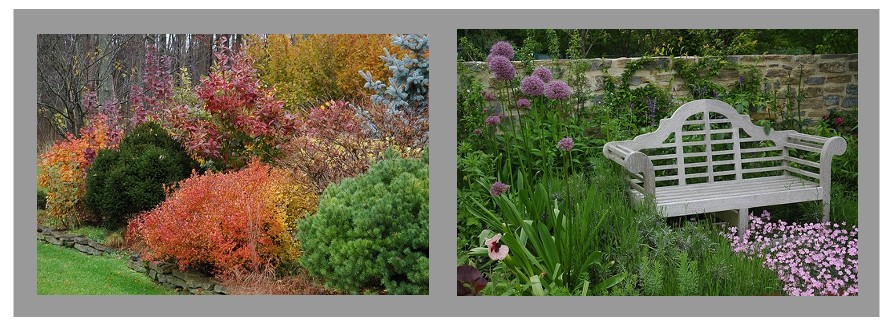
Where will the garden be located for best enjoyment: outside a prominent window? 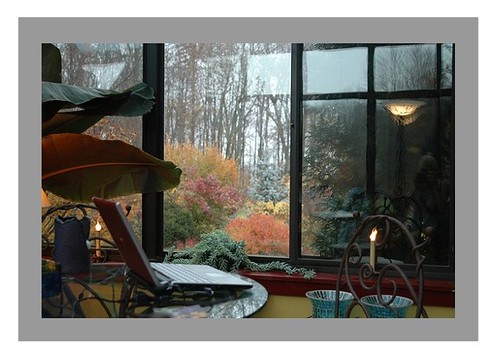 Will it be a free standing bed or will it be bordered by the house or a fence? How big should it be? (this goes back to how much time you have to work in the space—don’t get carried away with the size!!)
Will it be a free standing bed or will it be bordered by the house or a fence? How big should it be? (this goes back to how much time you have to work in the space—don’t get carried away with the size!!)
How will the Garden function? Will it be used for entertaining, meditation and at what time of the day? For cut flowers, fresh produce or to attract birds and butterflies? (photos below: attracting birds =Winterberry Holly/cut flowers=Limelight hydrangea)
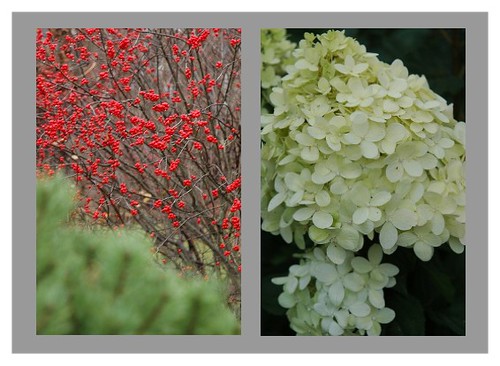
What will be your Color Choices? And consider Texture and Form! Do you want a limited color palette that will project a more sophisticated look or perhaps a bit of every color which is more playful and great for lively entertaining spots. Will cool colors be selected for a peaceful feeling and to make the area appear larger or will hot colors rule to create a more “up-beat” tone? (Photos: hot=Blue Billows Hydrangea, autumn color/Cool=Endless Summer Hydrangea) Will fine textures dominate to create softness or will bold textures and forms be selected to make an architectural statement?

Pick a Peak Season of Interest
Even though a well-designedmixed garden will have a long season of interest if colors, textures and plants are properly selected it’s still important to pick a season for each border or garden—when it will really “sing!”. For example you may want a winter garden to enjoy from a window or a spring border that you walk by daily. Once you have your season then go for plants that look their best at that time of the year. (photo: autumn/winter peak season of interest for this shrub border)
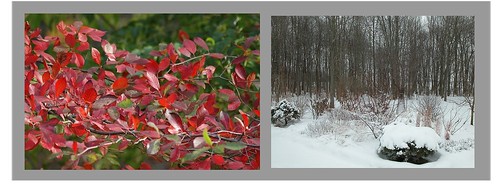
Plant Selection The moment we’ve all been waiting for…but see how many things we had to consider before this step. Contrary to walking into a garden center, impulsively selecting a cart-load of plants, and then coming home and walking around the garden wondering where they sho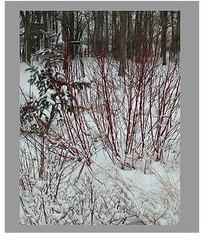 uld go (we all do this and support groups will soon be forming!!!). Remember FOCUS!! All of the above points come into play in selecting the right plants for the site, based on your maintenance needs, function, color/texture/form choices and season of interest. (Photos: For this border I selected plants for autumn/winter interest such as Midwinter Fire Dogwood and a Black Tupelo stands gracefully just outside the border.
uld go (we all do this and support groups will soon be forming!!!). Remember FOCUS!! All of the above points come into play in selecting the right plants for the site, based on your maintenance needs, function, color/texture/form choices and season of interest. (Photos: For this border I selected plants for autumn/winter interest such as Midwinter Fire Dogwood and a Black Tupelo stands gracefully just outside the border.
You can do this—have fun with the process!!!